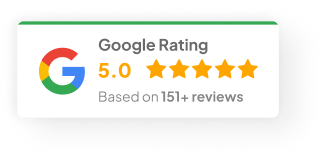19 Sep 25
How to Optimize Elementor Web Design for Maximum Speed and Performance
Elementor makes it easy to design a sharp-looking site. But here’s the thing—if it loads slowly, nobody cares how good it looks. People are impatient online. Google even found that 53% of mobile users ditch a site if it takes more than 3 seconds to load. That’s brutal, but it’s reality.
Speed isn’t just a tech detail. It’s tied to search rankings, user experience, and whether people actually buy from you. The good news? There are some straightforward ways to keep an Elementor site lean and fast.
1) Start with a Lightweight Theme
Not all WordPress themes play nice with Elementor. Some come stuffed with features you’ll never touch, which just slows everything down. Lightweight options like Hello Elementor or Astra keep things simple and let Elementor do the heavy lifting.
Bulky themes usually bring:
- Extra scripts you don’t need
- Preloaded styling that clogs things up
- Longer load times for every page
The less junk the server has to handle, the faster your site will feel.
2) Keep Images Under Control
Images eat bandwidth. Oversized files drag performance down, and users notice. Compress before uploading, use formats like WebP, and switch on lazy loading so images only load when people scroll to them.
There’s money on the line here. A 2019 Unbounce study found that 70% of consumers say site speed affects their buying decisions. That slow product photo? It could literally be costing sales.
Tools like TinyPNG, Smush, or Imagify get the job done. Elementor Pro even has optimization tools built in—it’s silly not to use them.
3) Don’t Go Plugin Crazy
It’s tempting to grab a plugin for every little thing. Elementor already has a ton of functionality, so piling on extras just adds weight and potential conflicts.
A good routine:
- Do a quarterly plugin audit
- Delete the ones you don’t use
- Stick to multipurpose plugins where possible
Fewer plugins = faster site and fewer security risks.
4) Use Caching
Caching is a no-brainer. It saves a version of your site so the server isn’t rebuilding it from scratch every time. That means faster load times for everyone.
Plugins like WP Rocket, W3 Total Cache, or SiteGround Optimizer work well with Elementor. Done right, caching can shave seconds off page loads.
5) Add a CDN
If visitors are coming from different regions, a Content Delivery Network helps a ton. A CDN spreads your site across servers worldwide so people connect to the one closest to them.
Cloudflare says CDNs can cut load times by around 50%. That’s huge for e-commerce or global audiences.
6) Trim Elementor’s Extra Code
Elementor tends to load CSS and JavaScript that you might not even be using. Performance tools like Asset CleanUp or Perfmatters let you strip away the excess.
It’s behind-the-scenes work, but pair it with caching and a CDN, and you’ll feel the difference.
7) Invest in Good Hosting
No trick in the book will save a site on bad hosting. Shared hosting often means slow, inconsistent performance—especially if traffic spikes.
Managed WordPress hosts like Kinsta, WP Engine, or SiteGround usually offer:
- Faster servers
- Built-in caching
- Better uptime
- Automatic updates
It costs more, but it’s money well spent.
8) Keep Testing
Optimization isn’t “set and forget.” Sites change, plugins update, and speed issues creep back in. Regular testing keeps you ahead of the problem.
Free tools worth using: Google PageSpeed Insights, GTmetrix, Pingdom. Run checks often, fix issues as they come up.
Why Work with a Web Design Agency
All these steps help. But if the goal is a site that’s not just fast, but also converts, it pays to bring in professionals. Agencies with Elementor experience understand both design and performance.
A fast site is good. A fast site that drives sales? That’s the real win.
Choosing the Right Agency
Not every agency delivers the same quality. Look for:
- A proven track record with real case studies
- A focus on conversions, not just making things look nice
- Technical know-how in SEO, responsive design, performance
- Clear communication, no jargon overkill
- Long-term support beyond launch
The right partner handles the technical side so you can focus on growth.
Wrapping Up
Elementor gives you the tools to build something beautiful. But beauty won’t matter if your pages crawl. Lightweight themes, optimized images, fewer plugins, caching, CDNs, better hosting—they all add up.
And if the bigger goal is leads, sales, growth—then handing it off to pros who know how to balance speed and conversion is the smart play.


